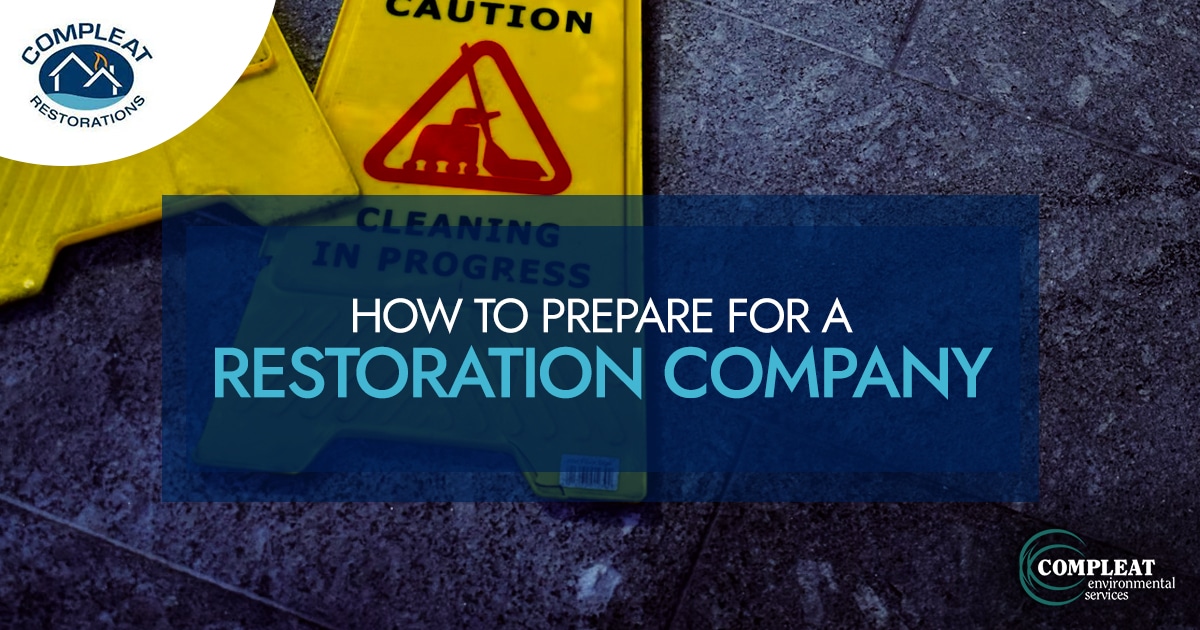Underestimating the effects of water damage is a common mistake for homeowners. In the hustle to fix the issue at hand? Be it broken pipes, leaking appliances, flooding from harsh winter weather? The damaging effects of a house fire? You may not notice the devastating impact that water damage has on your structure until it’s too late.
It is important that every homeowner conducts a regular inspection of potential sources of water damage. This is so that when troubles arise, you act on them quickly and efficiently before any irreversible damage is done to your home. Water can cause significant damage to your home very quickly.
Different Types of Water Damage
Water leaks or flooding can cause significant damage to your home. Ignoring it might potentially lead to more serious problems. Here are some headache-inducing problems that seemingly innocent water can do to your home:
- Water Damage to Furniture and Surfaces in Your Home. Water may cause warping of wooden surfaces, tarnishing of metal surfaces, and peeling of paint and wallpapers. Damage can start within hours, and can rapidly worsen if you delay repair work.
- Loss of Personal Items. Water can easily damage books, photos, and documents you have otherwise kept safe within a matter of minutes.
- Stains. Fabric and other colored materials soaked in water can leave stains on your floors, walls, and furniture. Leaving them untreated for long may make it permanent.
- Foul Odor. The growth and accumulation of bacteria, mold and mildew in the damaged areas of your home can pose a possible health risk – and the bad odor it can cause is not a sign to ignore. Simply using air fresheners or opening windows to cover the smell will not fix the issue. You need to address the root cause. This is the presence of bacteria, mold, and mildew. It is because of the water damage in a home. You need to investigate whether you need true remediation or removal.
- Health Risks. The spread of mold in your home caused by water damage may lead to skin and respiratory problems, including eczema, asthma, and difficulty in breathing. Proper restoration after water damage in your home can prevent these types of health problems.
- Electrical Damage. When water hits electrical appliances or outlets, it increases the risk of appliance damage. More seriously, it raises the risk of shock or electrocution and becomes a serious safety concern.
- Structural Damage. Left untreated for long, unwelcome water may lead to structural damage. You may notice larger cracks in the walls or in the foundation. There may also be rotting structural support in your home. This can be an expensive restoration and leave you with an unsafe dwelling in the meantime.
What Happens During the First Day of Water Damage?
Many homeowners do not have a clear idea of how fast water damage spreads. This is probably the reason many people ignore the first signs, thinking that repairs and restoration can be done at a more convenient time.
However, water will spread quickly on the floor, saturating your carpet, staining your tiles, and threatening furniture. It will spread until it stops – hitting a literal wall – where the impact can be seen and felt structurally, as well. More serious safety risks arise if water continues to spread, hitting appliances or electrical outlets.
In the next few hours, water-soaked furniture, wooden doors, and drywall begin to swell and lose shape, paint or wallpaper starts to peel, and metal surfaces start to tarnish. Cabinets and everything inside – including your personal belongings or important documents – may be damaged beyond repair if left unaddressed. Also, within the first 24 hours, bacteria start to accumulate in stagnant water, and mold can start to develop.
This is why the first day – even the first few hours – could be the most important for you as a homeowner or property manager. It’s important that you know what course of action to take, and who to call for assistance in the first few hours of new or sizable water damage.
What Happens After a Couple of Days?
After the first couple of days, the damage worsens dramatically. Wood surfaces will considerably warp, and metal surfaces will noticeably corrode. Paint and wallpaper will peel and reveal water damage on the wall or the insulation. The costs of repair and restoration at this point would already be much more intense compared to when the damage had just started.
While mold and mildew may not become noticeable until around 1 to 2 weeks after initial damage, growth starts in the first few days after the damage is done. They can then spread rapidly, posing serious health hazards to you and your family before you even realize the mold caused by water damage has spawned.
Mold and mildew can grow and contribute to the following problems:
- Extensive damage on your carpet, tiles, drywall, wallpaper, and even on couches, tables, chairs, and other furniture – sometimes beyond repair.
- Unfavorable odors in rooms and stains on surfaces
- Skin and respiratory concerns for you and your family
What happens if you wait a few weeks to make repairs? The damage can worsen rapidly, and the cost of repairs may quickly rise to more than your home’s value. This neglect may also disqualify your home from receiving insurance claim coverage.
Should I DIY Water Damage Repair and Restoration?
If you have water damage, and you hopped online to Google your best course of action – we’re here to tell you that it’s best to seek the services of a reputable restoration company. Experienced professionals can accurately assess the level of damage and create a plan for efficient restoration work in your home.
While you think fans, dehumidifiers, or vacuums can do the job of drying out your home, professionals can speed up the process, and do it more effectively. This not only allows you to get on with your life as soon as possible, but it also reduces the risk of major health risks and increased severity of the water damage. Doing it yourself, without proper safety gear and equipment, also exposes you and your family to potential biohazard risks, especially if the leak comes from a backed-up sewer or if the water is black.
Aside from water extraction and monitored drying, restoration professionals can work with your insurance company in determining the items for restoration and the items for replacement claims, thereby making the process more manageable for you.
How Soon Should I Call a Restoration Company?
To contain the spread of mold and bacteria resulting from water damage and to minimize the risk of more serious damage, repair and restoration activities should start within the first 24 to 48 hours. Trust a restoration company backed with decades of experience in handling water damage repairs in Lancaster – from minor water leaks to large-scale flood damage. You can focus on your career, business, and family matters as restoration professionals work to bring your home back to life.
Seeing some signs of damage caused by water in your home or property? Contact Compleat Restorations now to learn more about our professional restoration services.


